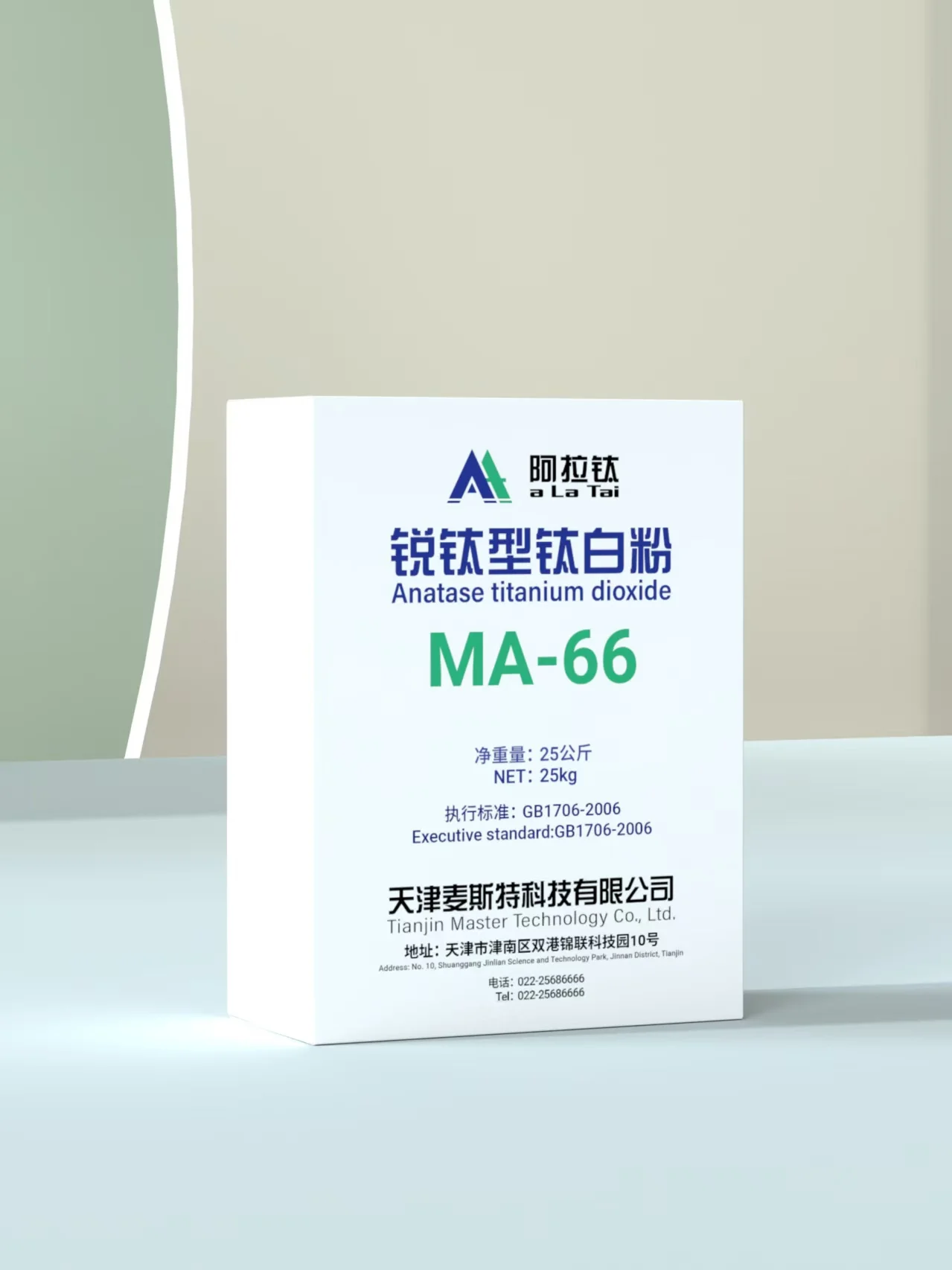What Makes Rutile and Anatase Titanium Dioxide Unique
Titanium dioxide (TiO₂) is one of the most widely used inorganic compounds in modern industry, valued for its brightness, opacity, and photocatalytic properties. It naturally occurs in several crystalline forms, but rutile and anatase titanium dioxide are the two most significant polymorphs. In this blog post, ALATAI TIO2 will share the applications of rutile and anatase titanium dioxide in coatings, pigments, photocatalysts, and environmental technologies.
Crystal Structure Differences Between Rutile and Anatase TiO₂
The primary distinction between rutile and anatase TiO₂ lies in their crystal lattice structure.
Rutile titanium dioxide has a tetragonal structure with each titanium atom surrounded by six oxygen atoms in a more compact arrangement. This gives rutile a higher density (4.23 g/cm³) and greater thermodynamic stability at high temperatures.
Anatase titanium dioxide, on the other hand, also exhibits a tetragonal form but with a more open structure, resulting in a lower density (3.89 g/cm³) and higher surface energy.
Because of this structural variance, anatase tends to transform into rutile when heated above 600–800°C, a process often exploited during TiO₂ manufacturing to achieve specific material properties.
Optical Properties of Rutile and Anatase Titanium Dioxide
Optical characteristics play a crucial role in determining the end-use of TiO₂.
Rutile TiO₂ possesses a higher refractive index (2.73) and superior light-scattering ability, making it ideal for use in paints, coatings, plastics, and paper. It provides excellent opacity and whiteness, even at lower concentrations.
Anatase TiO₂, with a lower refractive index of around 2.52, offers a softer and more bluish tone. It’s often used in cosmetics, photocatalysts, and solar cells where light absorption and UV activity are more important than opacity.
The difference in refractive behavior means rutile is the preferred grade for high-performance pigments, whereas anatase excels in light-driven chemical applications.

Photocatalytic Activity of Anatase Titanium Dioxide
Among the two, anatase titanium dioxide is renowned for its exceptional photocatalytic performance. When exposed to UV light, it generates reactive oxygen species capable of decomposing organic compounds, bacteria, and pollutants. This property makes anatase-based TiO₂ a key material in:
Air and water purification systems
Self-cleaning surfaces
Antibacterial coatings
Solar energy conversion devices
Its high surface area, combined with efficient electron mobility, allows anatase to outperform rutile in photocatalytic reactions. Researchers are also developing anatase-rutile composite structures to improve light absorption and enhance charge separation efficiency.
Rutile Titanium Dioxide in Pigments and Coatings
Rutile titanium dioxide pigments are the industry standard for achieving brightness and durability in coatings and plastics. Their high opacity and UV resistance make them indispensable in:
Architectural and industrial paints
Automotive finishes
Paper and plastic masterbatches
Ceramic glazes and inks
Due to its superior stability and weather resistance, rutile TiO₂ maintains color fidelity and gloss under sunlight, unlike anatase, which can undergo slight photodegradation. Furthermore, surface-treated rutile particles are often coated with silica or alumina to improve dispersibility and reduce photocatalytic reactivity, preventing degradation of polymer matrices.
Comparative Thermal Stability and Durability
Thermal and chemical stability is another key differentiator between rutile and anatase TiO₂.
Rutile exhibits outstanding stability under high temperatures and in harsh chemical environments. It retains its crystalline integrity, making it ideal for applications like ceramics, welding rods, and high-temperature coatings.
Anatase, while less stable thermally, offers higher activity in low-temperature photocatalytic reactions, making it more suited for environmental and energy-related fields.
In hybrid applications—such as solar cells and photocatalytic membranes—engineers often combine both forms to balance durability and reactivity.
Applications of Anatase and Rutile TiO₂ in Industry
Both forms of titanium dioxide play vital roles across diverse industries:
Pigment Industry: Rutile dominates due to its optical efficiency and UV resistance.
Environmental Engineering: Anatase is used in photocatalytic degradation of pollutants.
Electronics: TiO₂ thin films and coatings serve as dielectric materials and semiconductor layers.
Energy Conversion: Anatase nanoparticles enhance the efficiency of dye-sensitized solar cells.
Cosmetics and Sunscreens: Both forms are used as UV-blocking agents, though rutile is often preferred for minimal photocatalytic activity.
The ability to tailor TiO₂ properties through particle size control, doping, and surface modification allows it to serve emerging fields like hydrogen production, antiviral coatings, and smart construction materials.
Anatase-Rutile Synergy in Composite Titanium Dioxide
Recent advances in materials science have revealed that a mixture of anatase and rutile phases often yields superior performance compared to either form alone. The most well-known example is P25 TiO₂, a commercial product containing approximately 80% anatase and 20% rutile. This combination facilitates efficient electron-hole separation, improving photocatalytic efficiency under UV and visible light.
Such composites are widely used in environmental remediation, photovoltaics, and antimicrobial surfaces, demonstrating how phase engineering enhances TiO₂’s functionality.
Future Trends in Titanium Dioxide Research
Ongoing research continues to explore the boundaries of rutile and anatase titanium dioxide applications. Some of the most promising directions include:
Visible-light-responsive TiO₂: Through metal or nonmetal doping, scientists aim to extend TiO₂’s activation range beyond UV light.
Nanostructured TiO₂ materials: One-dimensional nanorods, nanotubes, and quantum dots offer new opportunities for energy storage and catalysis.
Sustainable TiO₂ synthesis: Innovations in low-energy and environmentally friendly production methods are gaining traction to reduce carbon footprint.
These developments are expected to expand TiO₂’s role in green technology, smart materials, and next-generation energy systems.
Conclusion
While rutile and anatase titanium dioxide share the same molecular formula, their structural, optical, and catalytic differences make each form uniquely valuable. Rutile continues to dominate as a high-performance pigment in coatings and plastics due to its durability and opacity, while anatase stands out in photocatalysis and clean energy applications.
Together, these polymorphs form the foundation of a versatile material family that bridges the gap between traditional industry and future innovation—proving that in the world of titanium dioxide, both rutile and anatase play indispensable roles in shaping a brighter, cleaner, and more sustainable future.
www.titanmastech.com
ALATAI TIO2